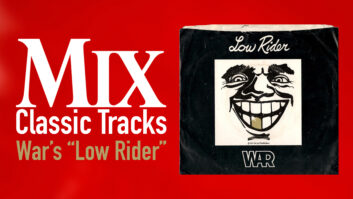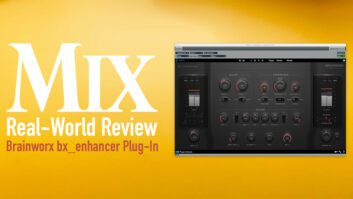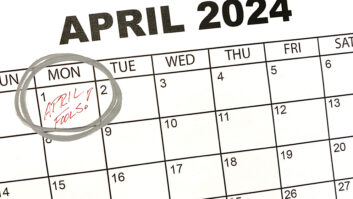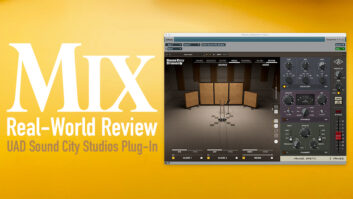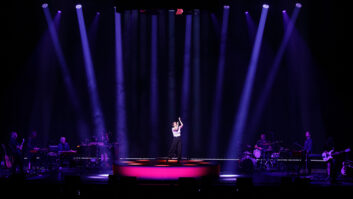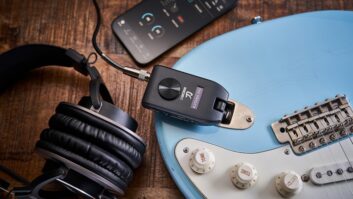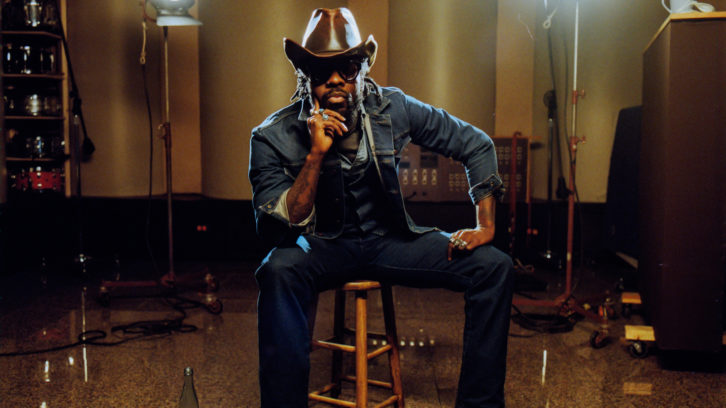
Chicago, IL (March 15, 2022)—When Jamil Rashad, the artist known as Boulevards, first reached out to his co-producers, Blake Rhein and Colin Croom, he said that he wanted to make an album that echoed Parliament-Funkadelic. Not surprisingly, the two Chicago-based musician/ engineer/producers were all in.
However, like a lot of projects Mix has covered in the past year, the production started in the midst of a global pandemic.
“Boulevards messaged me on Instagram, I think, based on my being a core member [guitarist and engineer] for Durand Jones and the Indications,” Rhein says. “That was in April 2020. So I listened to some of his older material, which was aligned with what we had been doing with the Indications—kind of disco with lots of guitars and synthesizers.”
By summer 2020, Rhein and Boulevards had begun collaborating from a distance—Rhein in Chicago and Boulevards in Raleigh, N.C.—to create the soul/funk EP Brother! Along the way, they developed a songwriting process that would carry them into production of the album Electric Cowboy: Born in Carolina Mud.
Each song typically began with Boulevards sending a reference song—something he liked the sound and vibe of—to one of the co-producers, who would then create an instrumental demo with a similar sound or feel. Music would fly back and forth until Rashad was ready to add lyrics/vocals.
AT HOME, IN TREEHOUSE
“I didn’t work on the EP, but I joined in for the album and we built on what they had been doing,” says Croom, who is also the keyboardist/ producer of indie band Twin Peaks. “A lot of the writing happened last November and December [2020], when we were all still in the thick of [Covid], so there was a lot of file sharing and spitballing. Blake wrote seven or eight tunes, and I wrote six, but a couple of songs didn’t make their way into the mix.”
“When we first started working this way, Jamil was going into a studio and cutting vocals, which was problematic because he would send me something and I’d be like, ‘Okay, can we try this part a different way?’ But he had left the studio,” explains Rhein. “So, I talked him into getting a cheap interface for home, but he ended up doing a lot of stuff on his phone. He would send me voice memos, and I’d bring them into a Pro Tools session and get some sounds, put some effects on, to flesh out a demo.”
Rhein worked in his personal studio, which at the time was in the basement of his home but has since relocated to a live-work storefront that houses his Pro Tools rig, instruments and a few mics.
Cory Henry: Something to Say
“Here’s my entire microphone collection: two SM57s, an SM7B, and this condenser microphone I bought in high school that I loved, the M-Audio Solaris,” he says. “That is my go-to for a one-mic drum kit situation—I will lay it on the floor next to the drum kit because it’s a heavy mic and the shockmount is broken. That has been a workhorse for me on anything acoustic, and I’ll almost always use a 57 on my guitar cab.”
Meanwhile, Croom had use of the Twin Peaks studio space, which the band had installed in an unused portion of the commercial Treehouse Studios complex, kind of like a popup. “Treehouse Studios is on the west side of Chicago. We were looking for a larger space than just your routine practice space, where we could also record and have some isolation,” Croom recalls. “So we found this room in the back that I think used to be a microbrewery, and we built out a dead room, a more live room, and the control room. It’s pretty bare-bones, but we do have a little bit of outboard gear, like the Warm Audio 1073s and some DIY color boxes that we used on a fair amount of things, like on snare bottom. We would use [Rhein’s M-Audio Solaris] as a sock mic near the bottom of the snare, just laying on the ground.”
TWIN PEAKS, PALISADE
Once the project shifted to keeper tracks, Rhein and Boulevards joined Croom at the Twin Peaks space for the bulk of the recording, including guitars, drums, electronic keys and bass, and most of Rashad’s vocals, which were captured with Rhein’s SM7B or a Warm Audio U47 clone.
“On stuff where he was singing a little bit louder, I’d definitely go toward the 7B, which has pretty low gain, and it has this nice kind of mellow effect where it accentuates the lower part of your voice,” Rhein explains. “He sings pretty low, so that mic was working really well for him. He’s also great at singing softly, almost like Marvin Gaye, and making his voice really effective in that way. In those cases, we used the Warm Audio mic.”
The recording process mainly consisted of replacing parts that needed to be altered or recorded better; some pieces were definitely kept from the demo phase. Finally the recording team decamped to Palisade Studios, also in Chicago, to capture a few elements that wanted next-level gear and a professionally tuned space.
“Palisade is a really nice old-school studio,” says Rhein. “We spent about four days there, using their grand piano on a couple of tracks, and it felt really good for recording horns. On a lot of that stuff, we were using their RCA 44 ribbon mic. They also have a rack of BAE 1073 preamps that I loved. I probably used them on almost everything we did there, but I remember specifically using those preamps on finger snaps to the song ‘Surprise.’ Finger snaps are deceptively hard to record because they can sound so thin. We put them through that preamp and pulled out the exact part that we wanted to hit the eardrum. That was game-changing.”
ALL TOGETHER AT THE MIX
The finished record, mixed by Ken Oriole at Blue Room Studios in Atlanta, owes some of its cool guitar and keyboard sounds to P-Funk, in a uniquely Boulevards way. “God Bless Ya (Be Thankful)” rocks more than it grooves, and “Better Off Dead,” featuring a vocal duet with alt-country singer/songwriter Nikki Lane, is more laid-back.
“‘Better Off Dead’ felt very natural,” Croom says. “A lot of times, when you’re writing and recording at the same time, it can be wearying figuring out how much to add. That song grew from some music that Blake wrote, and I think because of the composition references—I mean, there’s a lot of kind of ‘Superfly’ style in there, with a lot of low-bass-octave grand piano and wah-wah pedal—it has a lot stacked, but it doesn’t feel overwhelming. It was one of those sweet moments where you’re like, ‘Damn, this is huge, but I don’t have to take anything away.’ Then once Nikki sent her vocals, everything really clicked. I thought, ‘This is all we need.”

